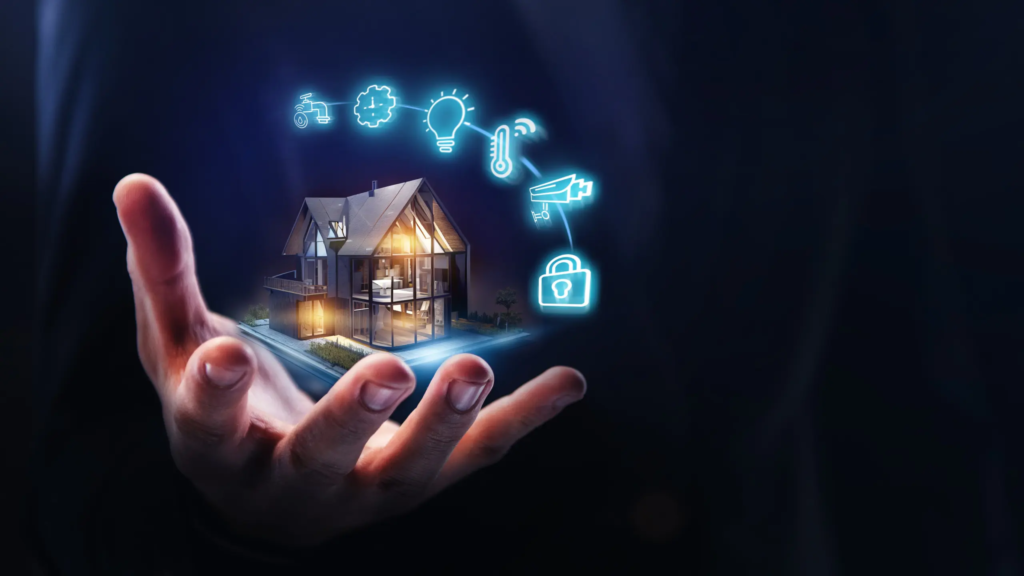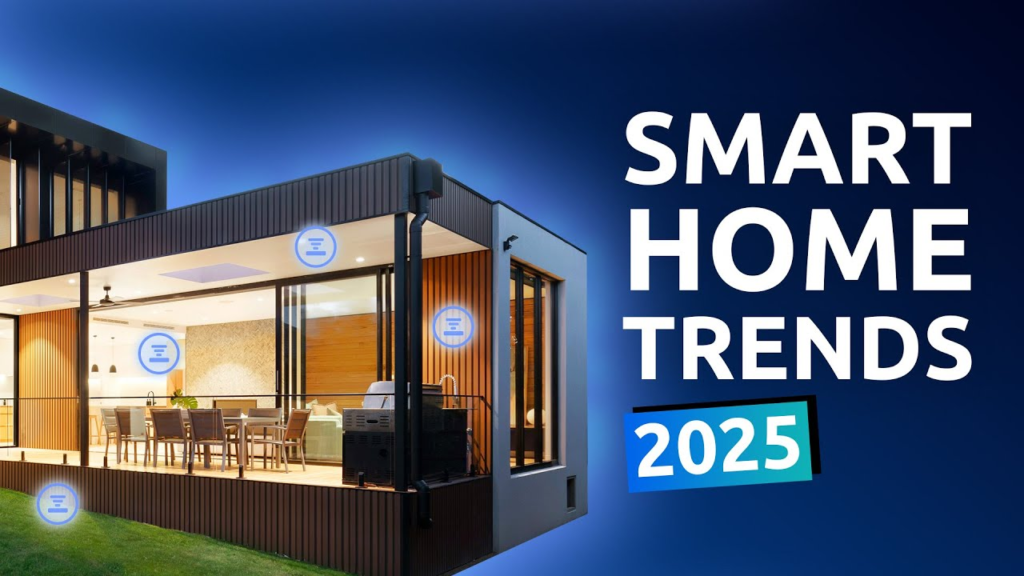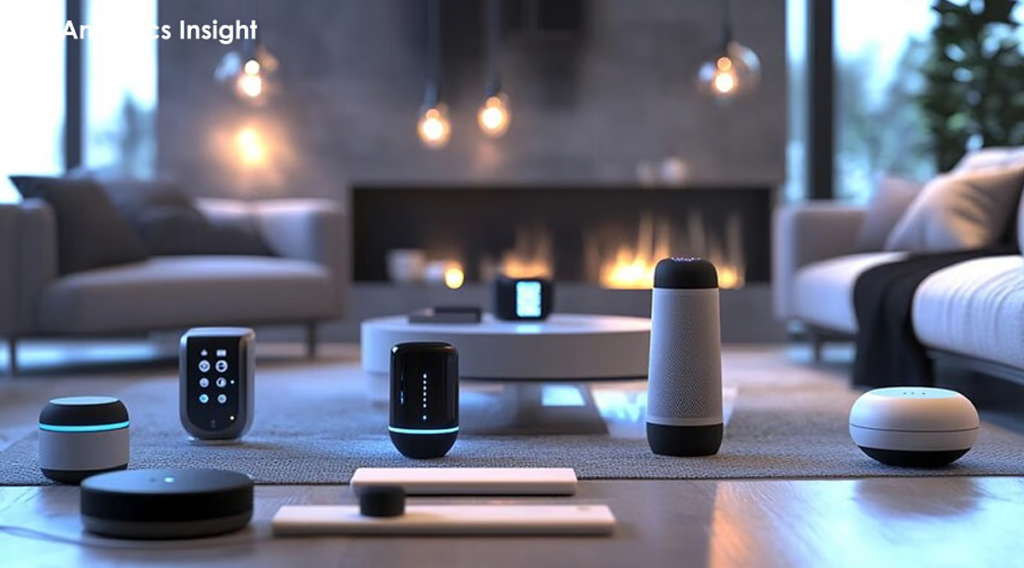The smart home revolution is transforming how we live, making our homes safer, more efficient, and incredibly convenient. In 2025, the U.S. market is buzzing with cutting-edge devices that blend seamless connectivity, sleek design, and powerful AI features. Whether you’re a tech enthusiast or just dipping your toes into smart home tech, this guide highlights the best devices to elevate your home this year. From security systems to thermostats, these gadgets are shaping the future of living spaces across America.

Why Smart Homes Are the Future
Smart home devices are no longer a luxury—they’re becoming a necessity. According to recent surveys, over 60% of U.S. households now own at least one smart device, and that number is climbing fast. These gadgets save energy, boost security, and let you control your home with a tap on your phone or a voice command. With advancements in AI and the Matter standard—a universal connectivity protocol—devices from different brands now work together smoothly, making 2025 the perfect year to upgrade your home.
The appeal is simple: convenience, cost savings, and peace of mind. Imagine adjusting your thermostat from bed, getting alerts when someone’s at your door, or automating your lights to save on bills. Let’s dive into the top U.S. smart home devices for 2025 that are leading this revolution.

Top Smart Home Devices for 2025
1. SimpliSafe Home Security System: The Ultimate Protection
When it comes to home security, SimpliSafe’s starter kit stands out in 2025. Priced around $250 with discounts, it’s a DIY-friendly system that doesn’t skimp on features. It includes door/window sensors, motion detectors, and glass-break sensors, all backed by sharp AI that can distinguish between strangers and familiar faces. With optional monitoring plans starting at $10 per month (or $30 for advanced features like live guard watching), SimpliSafe offers flexibility for every budget.
Why it’s great: The system switches to cellular backup if Wi-Fi fails, ensuring constant protection. Its easy setup and robust features make it ideal for homeowners and renters alike. CNET’s 180-hour testing confirms it’s the top pick for most households.
2. Ecobee Premium Smart Thermostat: Energy-Saving Brilliance
Energy costs are a concern for 78% of Americans, per a recent CNET survey, and the Ecobee Premium Smart Thermostat is here to help. This sleek device learns your schedule, adjusts temperatures automatically, and cuts energy waste. It’s packed with extras like a built-in Alexa speaker, Siri compatibility, and a satellite sensor to balance temperatures across rooms.
Priced around $250, it’s a premium choice that pays off through savings on utility bills. Its Eco Modes make energy optimization effortless, and the intuitive app provides detailed reports on your home’s energy use. If privacy or Alexa isn’t your thing, you might prefer the Nest Learning Thermostat, which offers similar high-tech features with a focus on Google Home integration.
3. TP-Link Kasa Smart Plugs: Affordable Connectivity
Want to make everyday appliances smart without breaking the bank? TP-Link Kasa Smart Plugs are a game-changer. Starting at under $10 each, these plugs connect to your Wi-Fi and let you control devices like lamps, coffee makers, or fans via an app or voice assistant. You can set schedules, monitor energy use, and even check if you left something on while away.
Their simplicity is their strength: plug them into any outlet, connect to the Kasa app, and you’re set. CNET’s tests praise their reliability and ease of use, making them a must-have for anyone starting their smart home journey.

4. Arlo Essential Indoor/Outdoor Camera: Watchful Eyes
Security cameras are a cornerstone of smart homes, and Arlo хозяйстваEssential Indoor/Outdoor Camera is a standout for 2025. This compact, all-in-one device offers crisp video, night vision, and AI-powered motion detection. It’s weather-resistant for outdoor use and works with Alexa, Google Home, and Apple HomeKit.
At around $100, it’s a budget-friendly option with no compromise on quality. The camera’s versatility makes it perfect for monitoring your front door, backyard, or even a nursery. Pair it with Arlo’s subscription for cloud storage and advanced alerts, or use local storage for a one-time purchase.
5. Eero 7 Wi-Fi Router: The Backbone of Connectivity
A smart home is only as good as its Wi-Fi, and the Eero 7 Wi-Fi Router delivers in 2025. Supporting the latest Wi-Fi 7 standard, it ensures blazing-fast speeds and reliable connections for all your devices. With a quad-core processor, it handles multiple tasks like streaming, gaming, and smart home controls without lag.
Priced around $150, it’s a worthwhile investment for homes with heavy internet use. CNET’s revamped testing in March 2025 ranks it among the top routers for seamless performance. Don’t hide it in a closet—place it centrally for the best coverage.
What’s Driving the Smart Home Boom?
The smart home market is thriving thanks to a few key trends. First, the Matter standard is making setup easier by ensuring devices from brands like Amazon, Google, and Apple play nicely together. A recent update, reported by 9to5Mac, introduces tap-to-pair functionality for HomeKit devices, slashing setup time. Second, AI is getting smarter—think cameras that recognize specific faces or thermostats that predict your preferences. Finally, affordability is improving, with devices like Kasa smart plugs bringing smart tech to every budget.
Economic factors also play a role. With utility costs rising, energy-saving devices like smart thermostats are in high demand. Plus, DIY installation options make systems like SimpliSafe accessible to renters and homeowners alike, no professional needed.
Tips for Building Your Smart Home
Ready to join the revolution? Here’s how to get started:
- Start Small: Begin with a smart plug or bulb to test the waters. They’re affordable and easy to use.
- Choose a Platform: Pick a voice assistant (Alexa, Google, or Siri) to streamline control. Most 2025 devices support multiple platforms.
- Prioritize Wi-Fi: A strong router like the Eero 7 ensures your devices stay connected.
- Check Compatibility: Look for Matter-certified devices to avoid connectivity headaches.
- Think Long-Term: Invest in devices that save money, like thermostats, or enhance security, like cameras.
The Road Ahead
The smart home revolution is just getting started. By 2025, expect even more devices with advanced AI, longer battery life, and tighter integration. As brands compete to offer the best value, consumers win with lower prices and better features. Whether you’re upgrading one room or your entire house, these U.S. devices are your ticket to a smarter, more connected home.
So, why wait? Dive into the smart home trend and make 2025 the year your home works for you. Which device will you try first?






